Kill, Baby, Kill
7 /10 1 Votes7
67% Rotten Tomatoes Genre Horror, Mystery Duration | 7.1/10 IMDb Country Italy | |||||||||||||||||||||||||||||||||
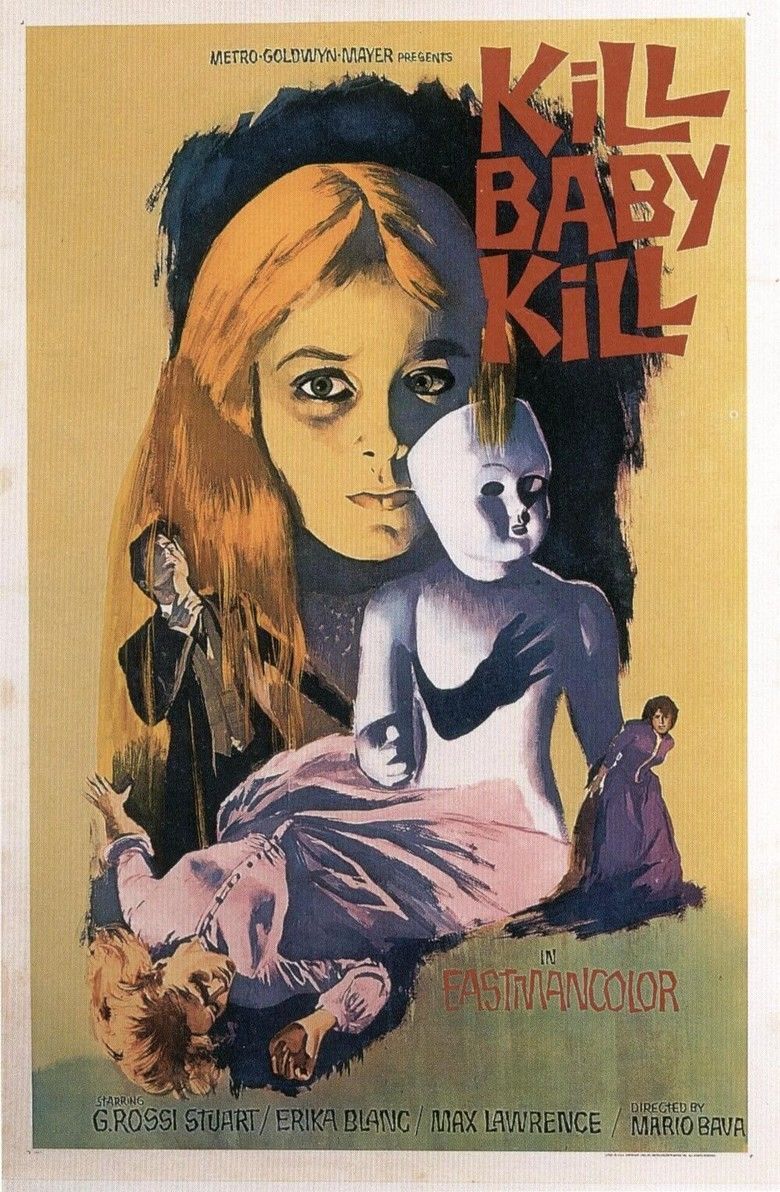 | ||||||||||||||||||||||||||||||||||
Release date July 8, 1966 (1966-07-08) (Italy) Writer Romano Migliorini (story), Roberto Natale (story), Romano Migliorini (screenplay), Roberto Natale (screenplay), Mario Bava (screenplay), John Davis Hart (dialogue) Screenplay Mario Bava, Roberto Natale, Romano Migliorini, John Davis Hart Cast Giacomo Rossi-Stuart (Dr. Paul Eswai), (Monica Schuftan), (Ruth), (Insp. Kruger), (Karl), (Baroness Graps)Similar movies Unfriended , The Woman in Black 2: Angel of Death , Pay the Ghost , The Apparition , The Awakening , Nomads | ||||||||||||||||||||||||||||||||||
Giallomusica presents extra photos from kill baby kill 1966 by mario bava
Kill, Baby, Kill (Italian: Operazione paura, lit. Operation Fear) is a 1966 Italian horror film directed by Mario Bava and starring Giacomo Rossi-Stuart and Erika Blanc. Based on a story co-written by Bava, Romano Migliorini, and Roberto Natale, the film focuses on a small village in the Carpathian Mountains that is being terrorized by the ghost of a murderous young girl.
Contents
- Giallomusica presents extra photos from kill baby kill 1966 by mario bava
- Plot
- Cast
- Production
- Release
- Critical reception
- Influence and analysis
- Home media
- References
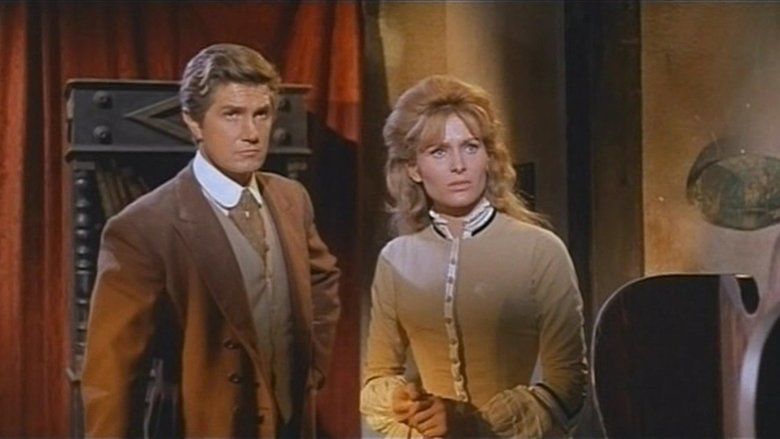
Shot in Calcata and released in Italy in the summer of 1966, Kill, Baby, Kill was a commercial success, grossing 201 million Italian lira in box office receipts; it was released in the United States two years later in October 1968. Noted for its lush visuals and Gothic narrative, it is considered by critics to be one of Bava's landmark films, and has also been credited as being substantively influential on various filmmakers across genres.

Plot
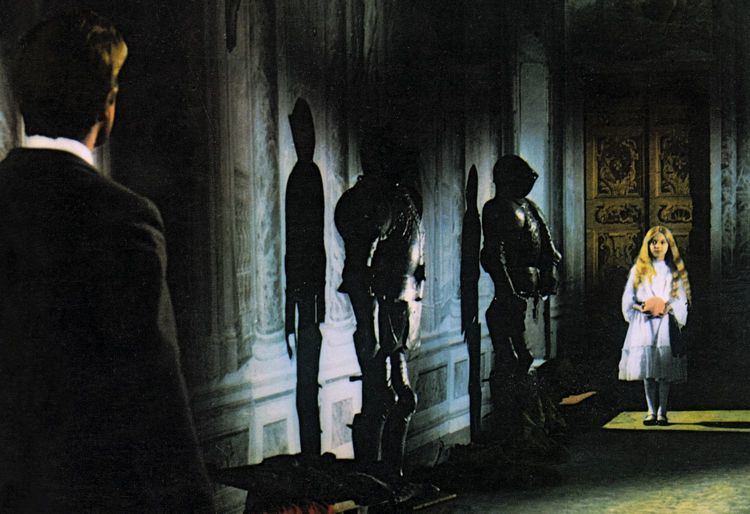
In 1907, Dr. Paul Eswai is sent to a Carpathian village to perform an autopsy on a woman who died under mysterious circumstances in an abandoned church. There, he meets Monica Shuftan, a native of the town who has returned to visit her parents' graves. Upon performing the autopsy, he inexplicably finds a silver coin embedded in the woman's heart.
The local villagers are accustomed to medicinal practices and superstitions Dr. Eswai finds preposterous, and claim the village is haunted by the ghost of young girl who curses those she visits. After Nadienne, the daughter of local innkeepers, is visited by the girl, the village witch named Ruth performs a ritual to help reverse the curse. The following evening, while venturing through the village, Eswai goes to meet with a colleague, Inspector Kruger, at the manor of Baroness Graps. Upon arriving at the large, decrepit home, she informs him that she knows of no such Kruger. Upon leaving, Eswai also encounters the ghostly young girl.
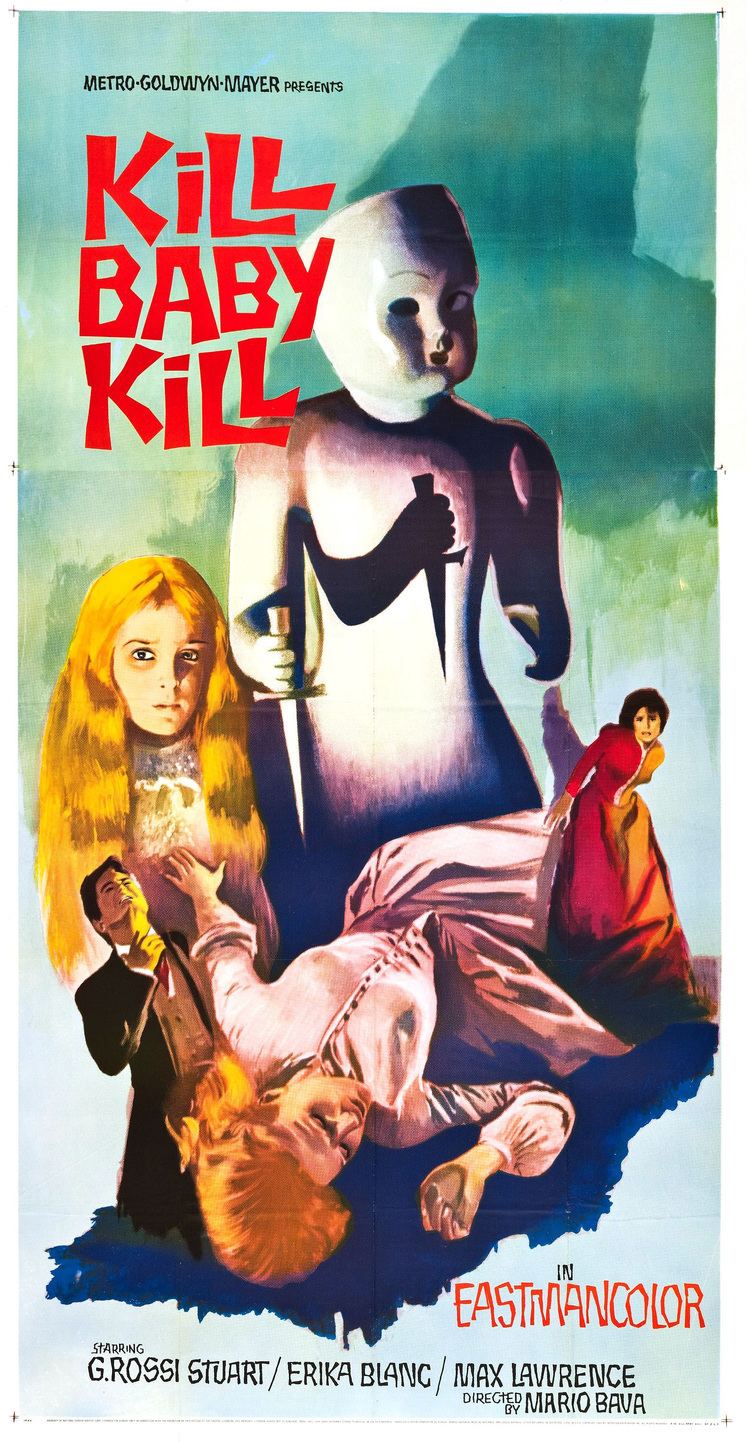
Meanwhile, Monica has a nightmare about the young child, and awakens to find a doll at the foot of her bed. She runs into Eswai in the street, and he offers to take her to the inn so she can sleep. At the inn, Eswai finds Nadienne has become increasingly ill, and gives her parents' medicine to help her. In the local cemetery, Eswai finds two gravediggers burying the corpse of Inspector Kruger, who had been shot in the head. Simultaneously, Nadienne is awoken by the young girl at her window, who compels her to impale herself with a candelabra.

Eswai is informed by Karl, the burgomeister, that the ghostly girl seen in the town is Melissa Graps, the dead daughter of the Baroness, and that she is responsible for Kruger's death; he also reveals to Monica that her parents were servants of the Graps'. When he goes to retrieve documents proving so, he is attacked by Melissa and dies. Monica and Eswai attempt to get the villagers'—who are reluctant to help them—attention by ringing the bell in the abandoned church. In the church, they find a secret passageway, in which Monica experiences déjà vu. Inside, they discover the Graps' family tomb, which includes that of Melissa, who died in 1887 at the age of seven.

They find a staircase leading out of the tomb, which takes them inside the Baroness Graps' home, who confronts them in the hallway. The Baroness reveals that Melissa died while fetching a toy ball during a drunken village festival, and was trampled to death by horses. Melissa appears in the room, and Monica suddenly vanishes through a doorway. Eswai chases after her through a series of doorways before finding himself locked in a room. He loses consciousness, and awakens in Ruth's home. On a table is the corpse of Karl, and Ruth confesses that the coins found in the hearts of the victims have been placed there by her as talismans meant to ward off supernatural powers of the Baroness Graps, who has invoked her daughter's ghost to punish the villagers.
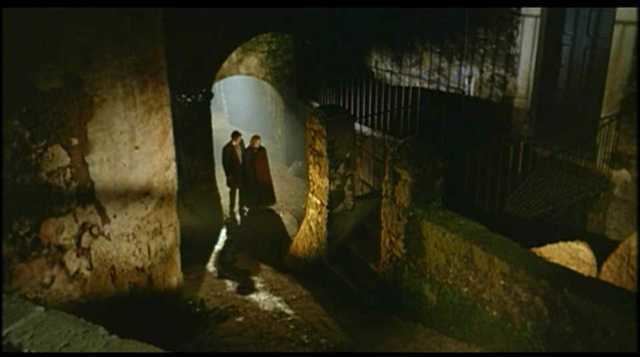
Back at the Graps' manor, the Baroness reveals to Monica that she is in fact her daughter, and Melissa her sister. Melissa's ghost appears, and chases Monica through the manor, down the grand staircase and into the tomb. Ruth arrives at the manor and confronts the Baroness. The Baroness stabs her through the chest with a fire poker, but Ruth manages to strangle her to death before dying, thus laying Melissa's soul to rest. Eswai and Monica leave the manor as the sun rises in the distance.
Cast
Production
Kill, Baby, Kill was director Mario Bava's return to gothic horror. The film was funded by the small Italian company F.U.L. Film, and shot on an estimated budget of ₤50,000. According to Bava, the film was shot in 12 days.
The exterior scenes were filmed on location in the medieval town Calcata.
Release
Kill, Baby, Kill was released in Italy on July 8, 1966 and was distributed by I.N.D.I.E.F. It grossed a total of 201 million Italian lira on its initial theatrical release. It was released on October 8, 1966 in the United States where it was distributed by Europix Consolidated Corp. In the United Kingdom, it was titled Curse of the Dead and on a re-issue in the United States, the film was re-titled Curse of the Living Dead.
Critical reception
Slant Magazine called it "arguably Bava's greatest achievement", giving it four stars out of a possible four. Slant also ranked it number 55 on their list of the top 100 horror films of all time. Bava biographer Tim Lucas described the film as a "mixture of pure poetry and pulp thriller, distinguished by vivid, hallucinogenic cinematography...jolts into the realms of free-form delirium and dementia. The spectre of little Melissa Graps, with her white lace dress and bouncing white ball, is perhaps the most influential icon of Italian horror cinema, having been copied in countless other films, notably Federico Fellini...and the film itself has been an admitted influence on such directors as Martin Scorsese and David Lynch." In 2016, Time Out conducted a poll with several authors, directors, actors and critics who have worked within the horror genre to vote for their top horror films. Kill, Baby... Kill! was ranked number 70 on the list of the top 100 horror films of all time.
Taste of Cinema observed that "Martin Scorsese called this Bava's best film...probably the most successful realization of Gothic horror-meets-bad-acid-trip." Scott Beggs said "This might be Bava’s greatest achievement, and he doesn’t hold out on the lush production design or the trippy camera tricks." Derek Hill designated Kill, Baby, Kill! as "one of his best efforts and what is arguably one of the most effective and chilling supernatural gothic horror films of all time. It has influenced Federico Fellini...Martin Scorsese...Kill, Baby, Kill! creates such a palpable mood of dread and oppression in its first few minutes and so effectively sustains the momentum until the last frame that it is easy to see why it has cast such a quiet legacy on other filmmakers." James Travers noted that it was "one of the most unsettling and chillingly atmospheric films in the entire horror genre...the colour-saturated chiaroscuro and unsettling camera positionings give the film an ethereal, brooding unreality, which the discordant score complements...one of Bava's most understated films." Jeffrey M. Anderson commented that "Bava has never presented his moods so vividly and with such effervescence." Allmovie called the film "an eerie and atmospheric effort that reflects many of the elements that have made the popular Italian director's films so compelling: excellent cinematography and strong performances from the talented cast."
Pablo Kjolseth of Turner Classic Movies praised the film's visuals, writing: "If you value mood and atmosphere over modern visceral thrills there's a good chance you'll land in the latter camp. Rich color schemes, crumbling elegant buildings, mist-covered cobble-stoned streets, dusty taverns, swirling spiral stairs, and endless halls with creepy décor and art all help establish a handful of the exteriors and interiors that make the film magical."
Influence and analysis
Kill, Baby, Kill has been credited as an inspiration on numerous filmmakers, specifically the image of the young girl with a bouncing ball utilized as a symbol of wickedness, which has been referenced in several contemporary horror films. Federico Fellini was inspired by the image, and used it in his segment "Toby Dammit," from the anthology film Spirits of the Dead (1968). The motif of the young girl with the bouncing ball was also utilized extensively in the 2002 horror film FeardotCom. Visually, the film has been noted as an inspiration on Dario Argento's Suspiria (1977). The film's use of color has also been noted as an inspiration on the visuals of Martin Scorsese's The Last Temptation of Christ (1988).
Scholar David Sanjek also noted the film's use of the child symbolizing evil as a pioneering motif in the genre: "[Kill, Baby, Kill], a film of genuine poetic power and visual ingenuity, successfully inverted gothic stereotypes of good and evil by having the power of good embodied by a dark-haired witch while evil is represented by a angelic, blonde young girl."
Home media
Kill, Baby, Kill was released on DVD in September 2000 by VCI. In 2007, the home video company Dark Sky Films attempted to release Kill, Baby, Kill on DVD in North America. After assuming the rights had been secured, the company proceeded to purchase the licensing rights to the film for the United States. Dark Sky Films was then sued by Alfredo Leone, who stated that he owned the rights to the film and had recently sold the rights to the company Anchor Bay Entertainment. The courts sided with Leone and Anchor Bay, while Dark Sky Films who had already pressed DVDs of the film had to cancel the release. The film was then released on DVD by Anchor Bay Entertainment in one of two five-film boxed sets of Bava's horror films, alongside Black Sunday (1960), Black Sabbath (1963), The Girl Who Knew Too Much (1963), and Knives of the Avenger (1966).
The film is slated to be released on Blu-ray for the first time in North America on June 13, 2017 by Kino Lorber.
References
Kill, Baby, Kill WikipediaKill, Baby, Kill IMDbKill, Baby, Kill Rotten TomatoesKill, Baby, Kill themoviedb.org
